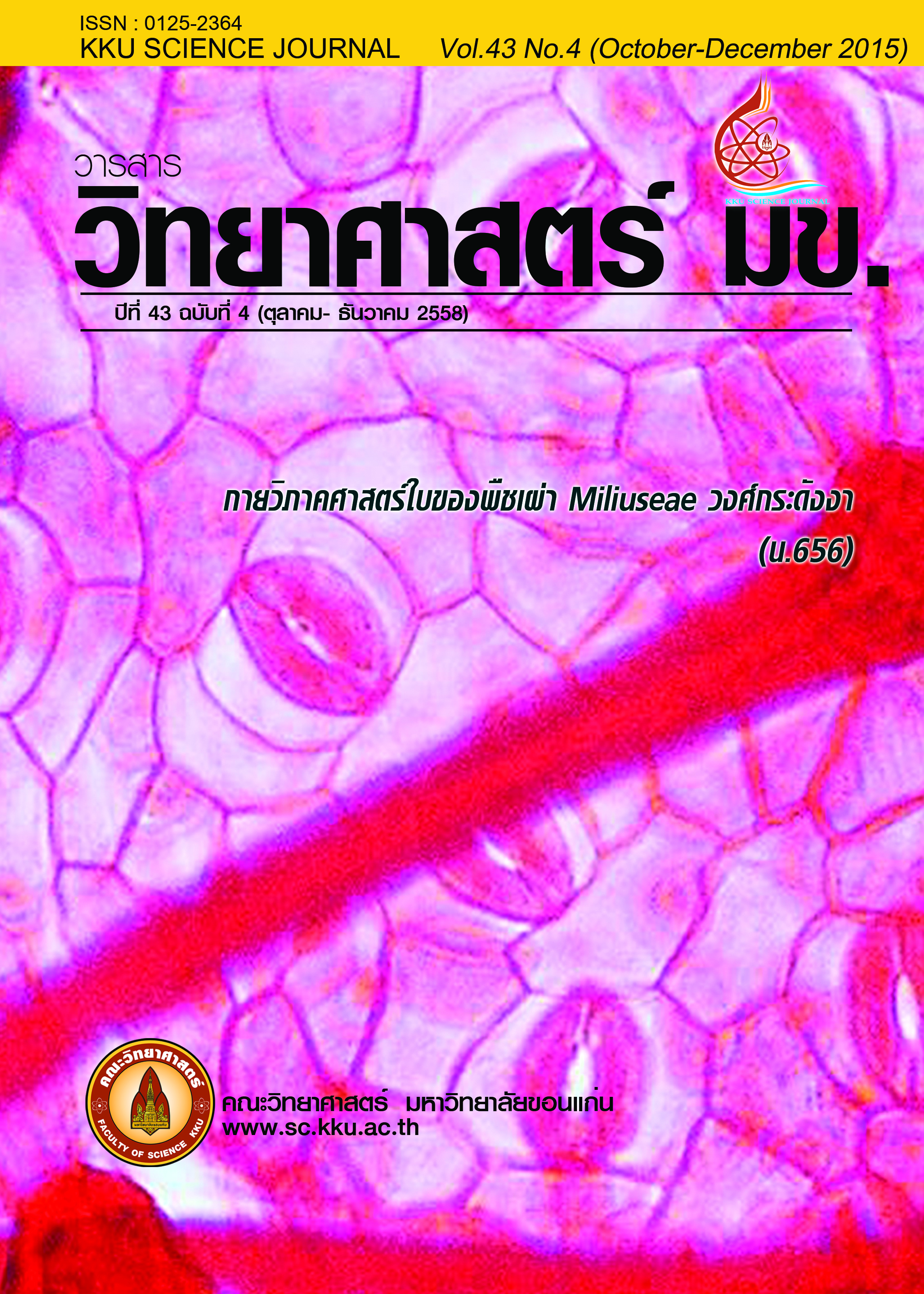Optimization for Biodiesel Production from Waste Chicken Fat Using Ultrasonic Assisted in Transesterification
Main Article Content
Abstract
The aim of this work was to investigate the optimum conditions of biodiesel production from waste chicken fat by ultrasonic assisted transesterification. The Box–Behnken design of experiment was carried out using the Minitab (version 16) with three experimental factors affecting on the production of biodiesel including catalyst concentration (0.5, 1.0 and 1.5 % w/w), methanol to oil molar ratio (3:1, 6:1 and 9:1) and reaction time (20, 30 and 40 min) using ultrasonic at 30 kHz. The results were analyzed using response surface methodology (RSM). A quadratic model was used for the prediction of the methyl ester yield. Probability value (P < 0.05) showed a very high significance for the regression model with the R2 of 99.96% indicating the high accuracy of the model. The optimum conditions were 1.50 %w/w NaOH, methanol to oil molar ratio of 6.87:1 and reaction time of 32.52 min. Using the optimum conditions, the production yield of methyl ester was of 99.11%. The chicken fat has a potential to be used as raw material in the biodiesel production as it provided the production yield higher than the 96.5% according to biodiesel standard of ASTM 6751.
Article Details

This work is licensed under a Creative Commons Attribution-NonCommercial-NoDerivatives 4.0 International License.


